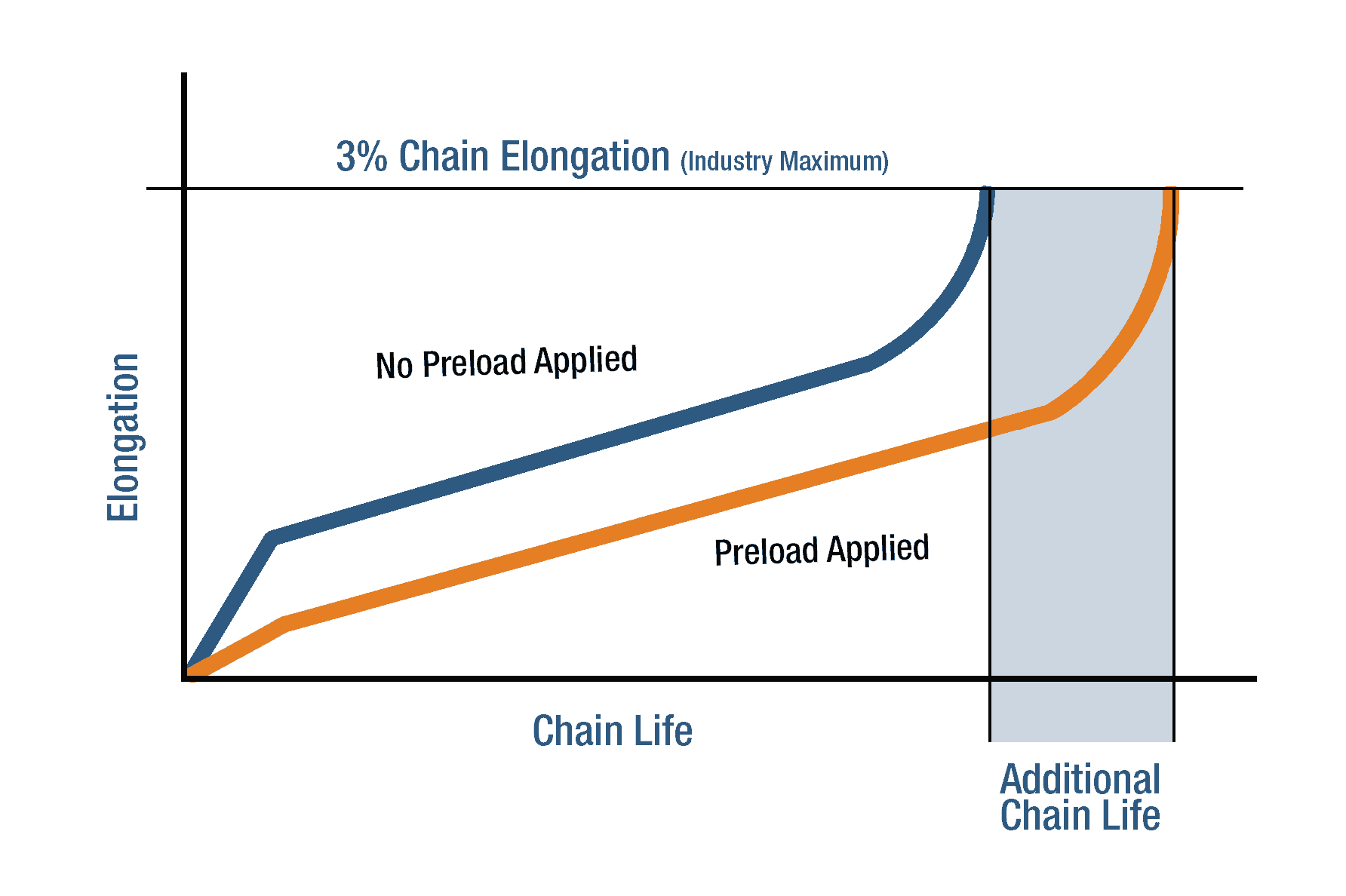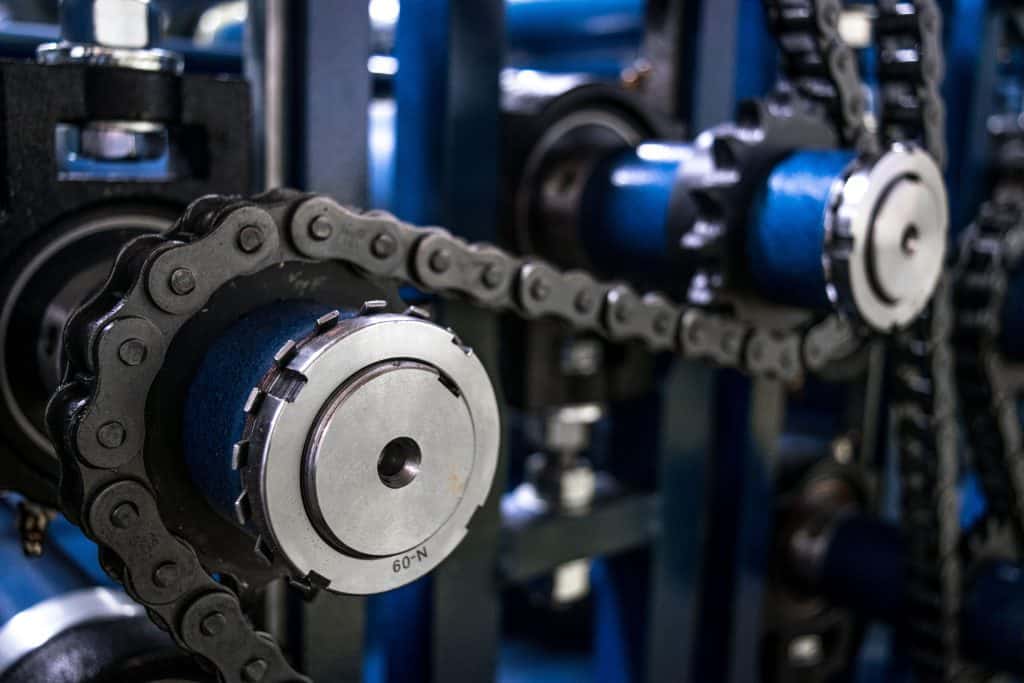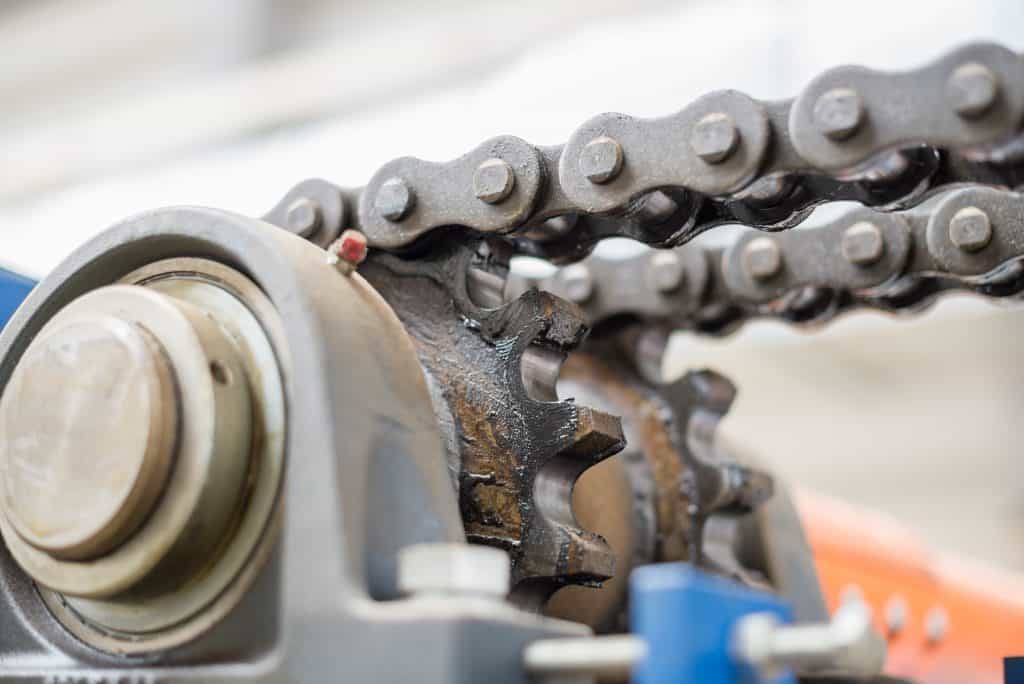How to Extend the Life of Roller Chain Drives

Roller chain drives have come to play a highly critical role within the power transmission industry. Roller chain consists of numerous working parts. All of these engage and rely on one another for proper function. The chain and sprocket drive is a workhorse but does require some care to maximize its lifespan.
Installation practices and how efficiently a drive operates will have a direct effect on its length of service. Longevity often is our ultimate goal: Have our components running well and last a long time. This can only benefit us as the user, through decreasing operating costs and allowing us to focus on other things.
Below we’ll discuss steps we can take before, during, and after installation of our roller chain that can directly affect the longevity of the drive.
Design Considerations for Roller Chain Drives
The first consideration and maybe the most obvious one is to make sure the roller chain is suitable for use with the design horsepower (HP) of the drive. Overlooking design HP is a mistake and a critical factor if you don’t want the chain running near its operational limits.
Design horsepower is the output of the prime mover multiplied by any service factors. This will give us a more accurate representation of the actual work required of the chain. Underdesigned drives will drastically reduce the lifespan of the roller chain, eventually leading to failure.
The drive sprocket has an impact on the lifespan of the chain in two ways. Chain speed, determined through drive sprocket RPM, will dictate specific methods of lubrication, which we’ll discuss later. The tooth count will also affect the maximum horsepower and RPM ratings. For example, if a drive sprocket has 11 teeth, it is rated for only 50% of its maximum speed and 30% of the maximum rated horsepower. Selecting a drive sprocket with a higher number of teeth will allow you to design a drive utilizing the chain’s full potential.

One final sprocket consideration
The drive sprocket, if less than 25 teeth, should have an uneven number of teeth. This assures uniform wear distribution.
As chain elongates, the distance between the rollers on a roller link remains constant, whereas the distance between the rollers connected by a pin link increases. Meaning, a sprocket with an even number of teeth will engage the same type of link on each revolution. With an uneven tooth count, each tooth will engage a pin link on one revolution, followed by a roller link on the next. If a sprocket begins to wear prematurely, it will inevitably put undue stresses on the chain.
Once deciding on these critical elements during the design phase, consider the roller chain features that may have an impact on lifespan.
Proper Expectations for your Roller Chain
As obvious as it may seem, the chain itself has a lot to do with how long it may last in a given drive. It might make sense to buy premium chain for every application and let superior quality or features extend its life. But in actuality, this makes little sense both practically or economically. There’s no reason to include quad-staked pins if the drive will never see heavy shock loads. Oil reservoirs or grooves in the bushings won’t provide much benefit if the application is a slow speed drive.
Matching the duty requirements more specifically to the chain can have a net positive effect on how long it will last. For example, in high speed/lighter load drives, having a solid bushing isn’t as critical as if the chain were experiencing heavy loads or shock. Evaluate the requirements of your drive and match them to the roller chain features that will accommodate them. There’s no need to ask a strongman to pirouette, or a ballerina to bench-press.
While there is a vast array of performance levels and features for any given component, there is one process during manufacturing that is proven to increase the life of your chain. Making sure the roller chain comes preloaded from the factory is essential. Preloading subjects chain to specific loads to reduce the initial elongation the chain would see during operation. A preloaded roller chain has a nearly linear progression of elongation. A chain that was not preloaded will experience a rapid increase before leveling off. The 3% figure of elongation the industry recommends you replace the chain at will arrive much sooner without preloading.

You’ve now determined what is needed from your chain, both in design and performance. Now comes installation.
Time to Link Up your Chain Drive
The assembly of a chain drive, if done errantly or casually, can cause longevity issues. Installation needn’t be an exacting science. Consider that your practices must be equal to or greater than the expectations we have of our components. There are just a few particular instances we need to pay close attention to during the install process that will give our chain increased life.
The very first thing to note is how the sprockets look. The condition of the teeth on both the drive and driven sprockets are important. Best practices suggest that after any signs of wear, replacing the sprocket with a new one will have a dramatic effect on how the chain will both operate and wear. Sprocket teeth can become so badly worn they will carry the chain past the point where the rollers would normally disengage. This will cause multiple issues concerning the efficiency and longevity of the drive.
Misalignment of sprockets will rapidly increase chain wear as well. Alignment should be one of the highest priorities. There are two planes we need to align by: axial and angular (as seen below). Angular misalignment occurs when the sprocket faces are oriented at an angle to one another. Axial misalignment occurs when they are parallel, but offset.
If you were to hold a straightedge up to the two sprockets, both faces should be completely flush against it. This gives the roller chain a distinct, linear path from one sprocket to the next. Misalignment subjects chain components such as the side plates and pins to excessive stress and strain. It’s important to consider how unintended forces negatively affect your drive.

One final chain consideration
Proper chain tension is to be maintained throughout the chain’s life, so as not to become a cause of failure. There is a fine line between excessive slack and being overly taught. Too much slack and the chain can jump teeth. Too little and tension will become too high, potentially damaging other components in addition to the chain. Chain sag should be 4% of your center distance (the distance between the two shafts).

With the sprockets inspected, aligned, and the chain tension at an ideal level, we’re on to the most critical step in extending the life of our chain drive.
Lubrication – the Secret Weapon for Your Chain Drive
The most influential factor for increasing the lifespan in anything with a rolling element is lubrication. Proper lubrication leads directly to longer chain life. We mentioned above that, depending on the speed of your drive, there are minimum lubrication requirements. Strictly adhere to these if you don’t want to shorten the lifespan of your chain.
The small sprocket rotation speed and tooth count determine what the minimum lubrication requirements are. Now unlike having a premium, heavy-duty chain in a low demand application, there is no such thing as lubricating “too well.”
- Slow speed drives – 11 tooth minimum – requiring manual or drip lubrication
- Medium speed – 17 tooth min. – bath or slinger disc lubrication
- High speed – 25 tooth min. – pump lubrication
Keep in mind that speed is relative to both chain pitch and small sprocket RPM. What it boils down to is this: your method of lubrication will determine how fast your chain drive can operate. For example, in a 40 pitch, 17 tooth drive, using only drip lubrication, the maximum small sprocket RPM is 500. If you can change the method for this drive to pump lubrication, it can see the max allowable RPM of 6000.
With the design phase, installation, and lubrication method set up, there’s only one thing left that can affect the life of a chain drive: ever-constant, hyper-vigilance. Kidding. Sort of.
Now Back to Our Regularly Scheduled Maintenance
Few things in this industry are “set it and forget it”. Regular maintenance can also extend the life of your drive. A thorough inspection after an initial 100 hours of operation, then every 500 hours after that, allows you to examine several key longevity elements: how the chain is wearing, if the chain is still under 3% elongation, whether the lubrication method is operating properly, chain sag is still within a normal range, and sprocket tooth form.
Extending the life of your roller chain is easy when planning ahead.
The time you take in designing and setting up a chain drive can pay dividends in the long run when it comes to the life of your drive. By creating an efficient drive, which has the added benefit of reducing costs, additionally, you’ll extend the life of this drive.
Sort by category: Installation & Maintenance
Sort by topic: Chain, Chain Conveyor, Lynx, Roller Chain, Sprocket




